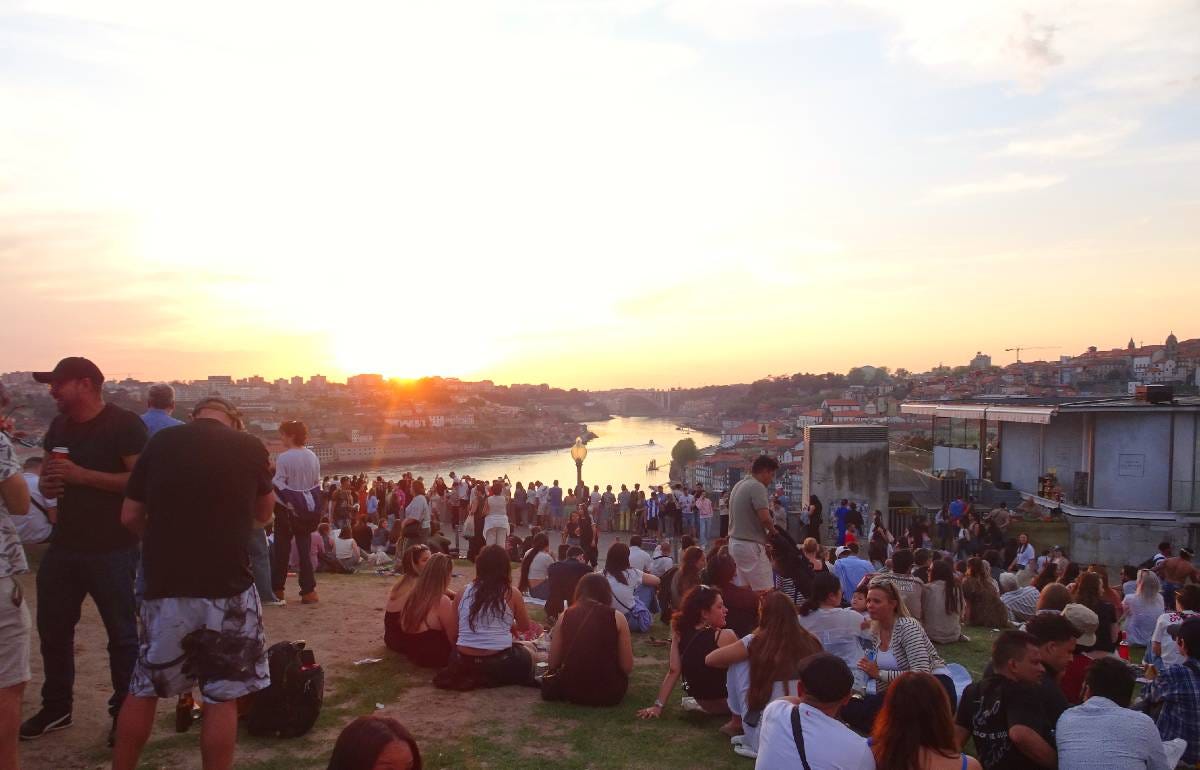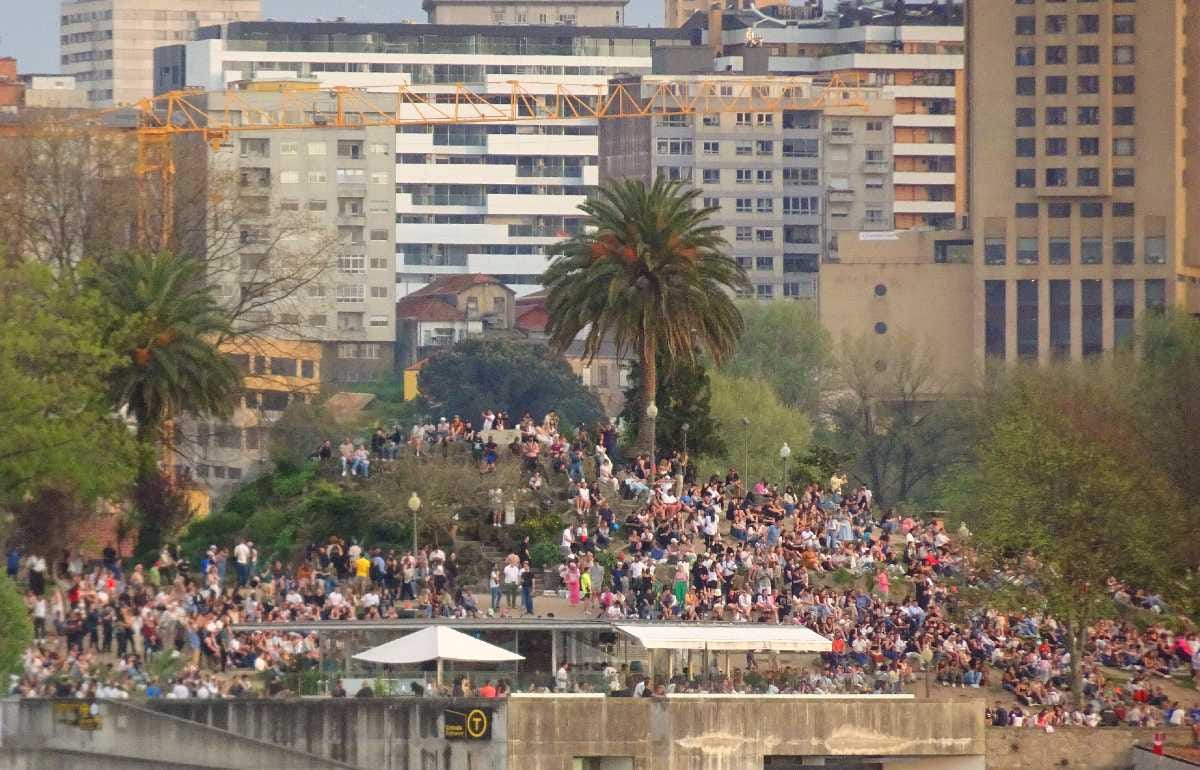Substack and the Problem with Tourism
Today I'm not going to discover any new places. I'm going to change what I usually do to talk about something I read and hear more and more frequently: tourist overcrowding.
I live in Spain, one of the countries with the most visitors in the world, and here I see a lot of talk about this issue, especially regarding foreign tourism. And yet, no Spanish city appears among the ten most tourist-saturated in Europe, and what's more, the beach towns that are most crowded in the summer are with Spanish tourists.
However, not only is it talked about, there are also protests. And I'm sure it will increase in the coming years.
Tourist overcrowding and complaints are something I've also noticed in other places I've traveled to. In Seville, a city where I spend part of the year, there has been talk for years about how the city center is increasingly crowded and more tourists are growing. And every year, several old buildings and houses are transformed into hotels. And homes are transformed into tourist accommodations.
Those who see it evolving day by day might not notice it, but I could see the difference in another of Europe's most touristy cities, Porto. In the previous post, I talked about how much I love traveling to Portugal and that I've been to the neighboring country many times. However, it had been eleven years since I'd been to Porto, and I stopped by while walking the Portuguese Camino a few weeks ago.
Porto, very different from the last time
On my last visit, in 2014, I remembered being at the well-known Lello bookstore and getting in without a line or anything. And it was free. Now, admission costs 10 euros, and the line, on a Thursday in April, was almost an hour long. Back in 2014, it was known for Harry Potter and had tours, but it wasn't like it is now.
And I'm only talking about that detail of the bookstore, not about the crowds along the Douro River or the hundreds of people crowding into the Gaia viewpoints to see the beautiful Porto sunset.
That's when I noticed how everything has changed in ten years. And also on the Portuguese Camino de Santiago itself. Back then, the Camino Portugues Coastal Way didn't yet exist; there was only the Portuguese Way. I walked to Santiago in 2014, and at the stops in Portugal, there were 14 of us. I remember that Camino fondly, and the people I walked it with. This time, I counted more than 200 pilgrims on the Coastal Camino. And there were possibly more on the Inland Camino. You only have to do the math to see the difference.
Having said all this, I open the discussion about how much social media and the current way of communicating are to blame for all of this. I've put Substack in the title because that's the platform I'm writing on. But I'm really talking about Facebook, Instagram, YouTube...
That said, Porto and Seville aren't among the 10 most tourist-saturated destinations in Europe. These, in 2024, were: Dubrovnik (36.0 tourists per inhabitant), Venice (21.3), Bruges (21.1), Rhodes (20.9), Reykjavik (16.3), Florence (13.5), Heraklion (13.4), Amsterdam (12.1), Dublin (11.3), and Tallinn (9.6).
I'd like to know what you think about this whole thing. And how you think it will end.
Substack y el problema con el turismo
Hoy no voy a descubrir ningún lugar. Voy a cambiar lo que habitualmente hago para hablar de algo que cada vez leo y oigo con más frecuencia: la saturación turística.
Vivo en España, en uno de los países que más personas recibe en todo el mundo y aquí veo que se habla mucho sobre ese asunto, sobre todo en lo referente al turismo extranjero. Y eso que ninguna ciudad española aparece entre las diez más saturadas por el turismo en Europa y, además, las localidades de playa que más lo están en verano son con turistas españoles.
Sin embargo, no sólo se habla, sino que hay protestas y manifestaciones. Y estoy seguro de que va a ir a más en los próximos años.
La saturación turística y las quejas es algo que he notado también en otros lugares a los que he viajado. Ya en Sevilla, una ciudad en la que paso parte del año, hace tiempo que se habla de que el centro cada vez es menos habitable. Y todos los años, son varios los edificios y casas antiguas que se transforman en hoteles. Y las viviendas que se transforman en alojamientos turísticos.
El que lo ve evolucionar día a día tal vez no lo advierta, pero sí que pude ver la diferencia en otra de las ciudades más turísticas de Europa, Oporto. Ya en el anterior post hablé de lo que me gusta viajar a Portugal y de que he estado ya muchas veces en el país vecino. Sin embargo, hacía once años que no estaba en Oporto y por allí pasé haciendo el Camino Portugués hace unas semanas.
Oporto, muy diferente a la última vez
En mi última visita, en 2014, recordaba haber estado en la conocida librería Lello y haber entrado sin colas ni nada. Y eso que era gratis. Ahora cuesta entrar 10 euros y el turno de espera era, un jueves de abril, de casi una hora de duración. Ya en 2014 era conocida por Harry Potter y tenía visitas, pero no era como ahora. Y sólo hablo de ese detalle de la librería y no de toda la multitud que había en el paseo que hay junto al Duero o de la locura de personas que se amontonan en los miradores de Gaia para ver el precioso atardecer que se puede disfrutar en Oporto.
Ahí noté cómo ha cambiado todo en diez años. Y también en el propio Camino de Santiago portugués. Entonces no existía aún el Camino de la Costa, sólo lo que ahora se conoce como Camino de Interior. Yo caminé hasta Santiago en 2014 y, en las paradas en Portugal, donde no había alternativa por falta de albergues, éramos 14 personas. Recuerdo aquel Camino con mucho cariño y a las personas con las que lo hice. En esta ocasión, no pude contar menos de 200 peregrinos en el Camino de la Costa. Y posiblemente habría más en el de Interior. Sólo tienen que hacer números para ver la diferencia.
Una vez dicho todo esto abro el debate de cuánto de culpa tienen de todo ello las redes sociales y la forma de comunicar que hay ahora. He puesto Substack en el título porque es la plataforma en la que estoy escribiendo. Pero en realidad me refiero a FB, a Instagram, a Youtube...
Dicho todo esto. Oporto o Sevilla no están entre los 10 destinos más saturados de turistas de Europa. Estos, en 2024, eran los siguientes: Dubrovnik (36,0 turistas por habitante), Venecia (21,3), Brujas (21,1), Rodas (20,9), Reikiavik (16,3), Florencia (13,5), Heraclión (13,4), Ámsterdam (12,1), Dublín (11,3) y Tallin (9,6).
Me gustaría saber qué opinan de todo este asunto. Y cómo creen que acabará.



